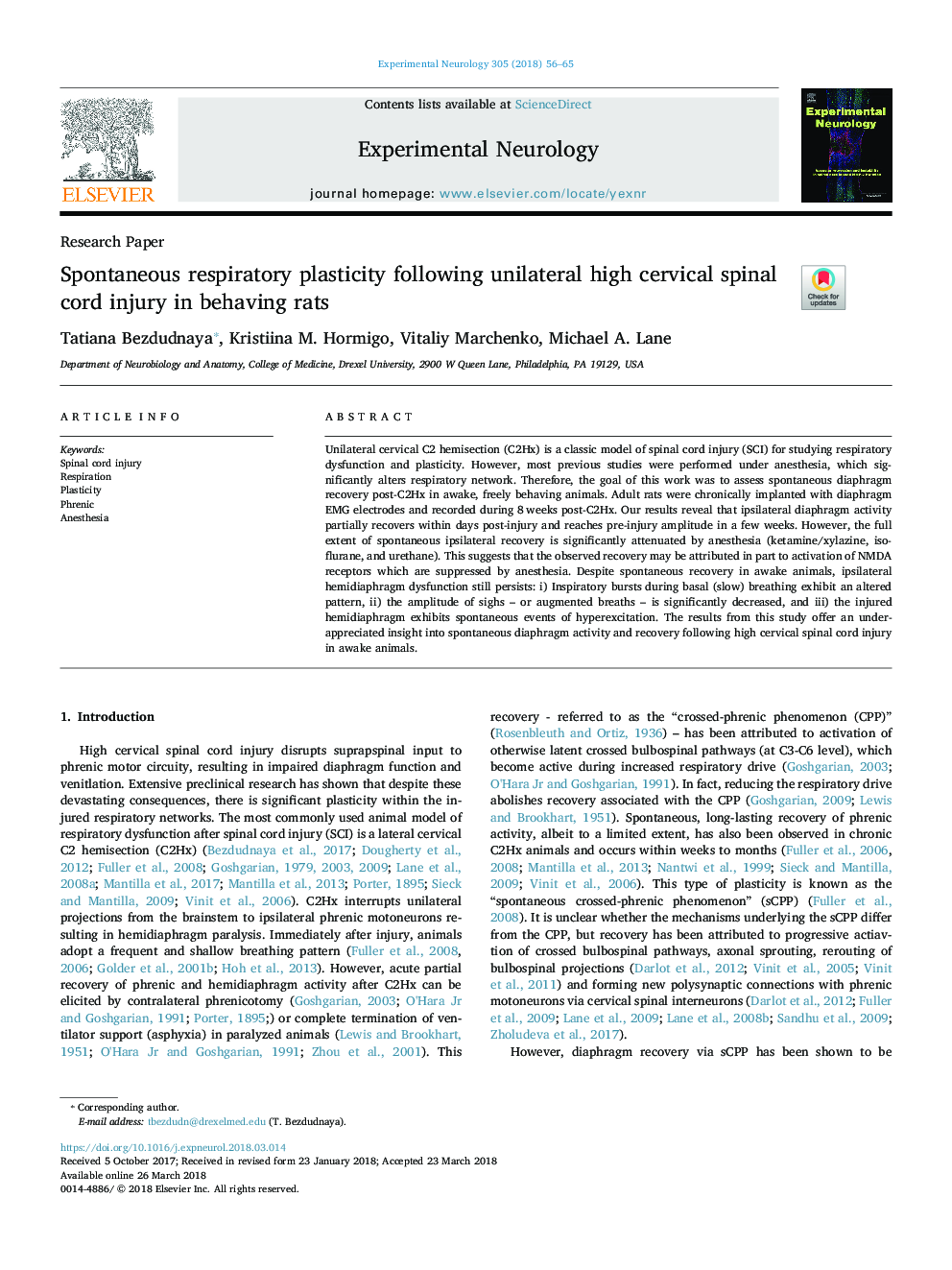| Article ID | Journal | Published Year | Pages | File Type |
|---|---|---|---|---|
| 8684616 | Experimental Neurology | 2018 | 10 Pages |
Abstract
Unilateral cervical C2 hemisection (C2Hx) is a classic model of spinal cord injury (SCI) for studying respiratory dysfunction and plasticity. However, most previous studies were performed under anesthesia, which significantly alters respiratory network. Therefore, the goal of this work was to assess spontaneous diaphragm recovery post-C2Hx in awake, freely behaving animals. Adult rats were chronically implanted with diaphragm EMG electrodes and recorded during 8â¯weeks post-C2Hx. Our results reveal that ipsilateral diaphragm activity partially recovers within days post-injury and reaches pre-injury amplitude in a few weeks. However, the full extent of spontaneous ipsilateral recovery is significantly attenuated by anesthesia (ketamine/xylazine, isoflurane, and urethane). This suggests that the observed recovery may be attributed in part to activation of NMDA receptors which are suppressed by anesthesia. Despite spontaneous recovery in awake animals, ipsilateral hemidiaphragm dysfunction still persists: i) Inspiratory bursts during basal (slow) breathing exhibit an altered pattern, ii) the amplitude of sighs - or augmented breaths - is significantly decreased, and iii) the injured hemidiaphragm exhibits spontaneous events of hyperexcitation. The results from this study offer an under-appreciated insight into spontaneous diaphragm activity and recovery following high cervical spinal cord injury in awake animals.
Related Topics
Life Sciences
Neuroscience
Neurology
Authors
Tatiana Bezdudnaya, Kristiina M. Hormigo, Vitaliy Marchenko, Michael A. Lane,
